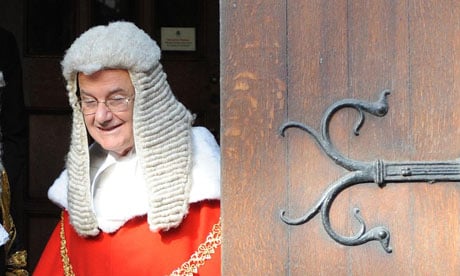Norma Harris* It’s a common question as to why judges wear wigs and one that carries with it some significant legal history.
Most countries that have judges with wigs are those who have been colonised by or heavily influenced by the United Kingdom, although in the United States the tradition is not followed.
Historical Origins in the United Kingdom
- Symbol of Anonymity and Impartiality: The practice of judges wearing wigs began in the 17th century in England when the wigs were known as “perukes.” They became a symbol of professionalism, neutrality, and a form of anonymity, but also provided the necessary authority of the court for those who appeared before it. By wearing wigs, judges present a uniform appearance that distances their personal identity from their official role, emphasizing the impartiality of the law.
- Influence of Fashion: Initially, wigs were part of the fashionable attire in the 17th century before becoming appropriated within the legal world. They were adopted by the legal profession as they signified intellect and were seen as a status symbol as well as providing the necessary judicial authority. Over time, as wigs went out of fashion in general society, they remained a staple in the legal attire.
- Tradition and Formality: In the UK, the wearing of wigs is deeply rooted in tradition. It’s a part of the ceremonial dress that adds to the gravity and formality of court proceedings and is followed in other UK former colonies such as India, Australia, New Zealand and other former British territories. This tradition has been carried on for centuries and is seen as an essential aspect of the British legal system’s heritage.
Contrast with the United States
- Rejection of Aristocratic Traditions: The United States, following its independence from Britain, deliberately moved away from many British traditions, including legal attire and wig-wearing. The founding fathers sought to create a legal system and societal norms that were distinct from those of their former colonists. This included a more simplified and democratic approach to court attire.
- Emphasis on Modernity and Practicality: American judges typically wear simple black robes, which goes some way towards providing the type of ‘uniform’ that wigs provide in a considerably more colorful manner. This is seen as a symbol of the solemnity and authority of their position. The simplicity of the robe is thought to represent the modern and practical nature of the American legal system.
- Cultural Differences: The absence of wigs in American courts also reflects broader cultural differences between the two countries. The United States has often emphasized a more straightforward, less ceremonial approach in various aspects of governance and public service, including the legal system.
The Wig Tradition
The tradition of judges wearing wigs in the UK is a holdover from historical practices, symbolizing neutrality, tradition, and formality, which contrasts with the US situation in its quest to forge a distinct identity, adopted a simpler approach, reflecting its values of modernity, practicality, and a break from aristocratic traditions.
These differences highlight how legal attire, like many other aspects of culture, can be deeply influenced by historical contexts and the evolving values of a society.
Whilst other jurisdictions have also sought to remove the use of wigs, perhaps other than distinctively ceremonial occasions as the opening of Parliament, the appointment of new Judges and so forth, the move has generally been to remove the tradition in order to make the judiciary appear more in tune with modern life and less ‘stuffy’ and removed from the realities of what many litigants or accused who appear before them are used to.
Author – Norma Harris is a freelance legal writer whose last article for LawFuel was on legal document automation tools and trends.


